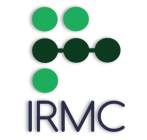by Randolph Peters ¦ June 1 2017
Darcy James Argue’s big band “Secret Society” and their latest work, “Real Enemies”
What is the difference between a hipster and a nerd?
First of all, only a nerd would ask such a question. “Welcome to the discussion! And join us in our devotion to Star Wars miniatures.” A hipster on the other hand, would shun the company. “What? Another artisanal toast maker in the same time zone? I’m outta here.”
Darcy James Argue, although based in hipster Brooklyn, is probably more of a high-level nerd. We’ve been on the same geeky music-notation email-discussion-list for over a decade. During that time, I’ve found Darcy to be extremely knowledgeable about music and all things Finale, our software of choice.
After years of appreciating his suggestions on how to use Finale, I finally became curious about his own music. I am happy to report that it is good. Very good, in fact! [See his albums Infernal Machines, Brooklyn Babylon and Real Enemies.]
This is not a big surprise to me. You see, I have this theory that composers who really care how their music appears on the page are likewise to be very choosy about their pitches and rhythms and how they are performed. The correlation is not 100% accurate of course, but in my experience, it is mostly true.
A composer’s need for control and the desire to perfectly engrave a page of music are impulses that come from the same place. But you can also interpret that attention to detail as being an empathetic characteristic. How will this notation be understood by the performer? Does it bring out the best performance? Will that performance “speak” to an audience?
Argue’s “Secret Society” is an extensively rehearsed big band of 18 players, all conducted by the composer himself. iTunes categorizes the music as “Avant-Garde Jazz,” but I don’t think that label does justice to the many genres you are likely to hear on one of their albums. Like the best jazz, it can swing, but it also plays with new stylistic combinations, extended techniques and brilliant timbres. I really don’t know where the classical new music ends and the jazz begins.
Darcy James Argue is a Canadian. We Canadians like knowing who else is a Canadian for some reason, especially when it comes to the talented ones. His citizenship is not particularly relevant here, except that the theme of “Real Enemies,” Argue’s latest CD, deals with the history of American conspiracies (real or otherwise), state secrecy, propaganda and paranoia. These are topics that fixate many of us in Canada in ways that our American cousins find baffling.
The “Real Enemies” CD is distilled from a larger multimedia production where the Cold War to today’s shadowy surveillance state are referenced by the use of recorded speeches and relevant narration. The recorded text frames the compositions with a rich and elaborate history if you choose to go down those rabbit holes. The music responds in turn with its own clever irony and musical referencing. For example, in “Dark Alliance,” music celebrating the Nicaraguan Revolution is juxtaposed against spoken text promoting Reagan’s “war on drugs.” The irony is that the CIA at the time ignored the drug dealing of their own Contra Rebel allies. Look it up!
One of the most arresting musical techniques on this album is the musical call back to 12-tone film and television soundtracks. Yes, serial music was a thing in scores from the 50s to the 70s. Most of this so-called dodecaphonic music wasn’t perhaps strictly serial in the Schönbergian sense and neither is Argue’s use of it here. By basing much of the pitch choice on partial serial techniques, the harmonic content feels grittier (in a good way!) and the melodies more angular. This retro sound fits the theme of the album even as it finds a new way to sound fresh. It recalls a similar use in films that used those serial techniques in their scores where they often accompanied scenes of anxiety, urban grit, and stress—never in scenes about beauty, love or something ethereal.
Argue has said that one of the inspirations of “Real Enemies” is the Francis Ford Coppola’s film “The Conversation.” That 1974 classic is a tour-de-force depiction of surveillance and paranoia, but the music score by David Shire is probably not the main source of Argue’s inspiration.
Don’t get me wrong. I think David Shire’s excellent soundtrack for “The Conversation” is a one-movie course on how to write music for film. But it is not based on serial themes. Instead, take a fresh listen to David Shire’s music from “The Taking of Pelham One, Two, Three,” also from 1974. Of particular interest is the use of a funk-based rhythmic groove supporting a big band horn section playing 12-tone melodies and harmonies.
First, a similar compositional technique used by Darcy James Argue in “The Enemy Within” from “Real Enemies” (especially after the 3’ mark):
Now David Shire’s 1974 score to “The Taking of Pelham One, Two, Three”:
I am not trying to make the case that there is something derivative about Argue’s music. Rather, I think he is doing something original by referencing a style that is rich in associations and then using those associations to serve a narrative plan that is designed to get us to think. The scope and ambition of this music is truly symphonic.
